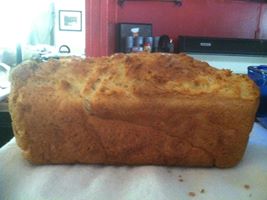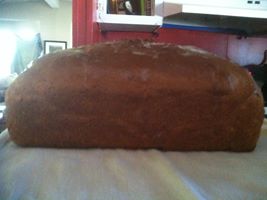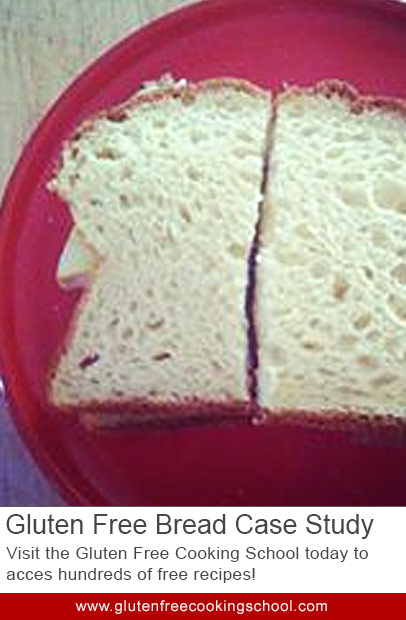Back at the end of June I told you all how excited I was at the prospect of teaching a 300 people how to bake gluten free bread during July. Â I have to say, baking with the July 300 students has been even more fun that I imagined!
Today I’d like to share Victoria’s bread baking story with you, as a case study in trusting the process. Gluten free bread dough is NOT Like wheat bread dough, and experienced wheat bread bakers often struggle the most with learning to bake good gluten free bread.
By the way, Victoria baked all of these loaves in a countertop toaster oven.
Instructions
Enter Victoria:
Trust the process…
I think my years of baking regular bread for my family actually worked in my disfavor.
I had become too used to what it all was “supposed to look and feel like” that anything other than my gluten-bread standard meant I was doing something wrong. So when I watched the video [from the Gluten Free Bread 101 class] and read the transcript , I thought, “Ok, we are starting from scratch here, as far as what to expect.”
With my first loaf I had my phone with the video right with me, as well as the printed transcript. It was the very first time I had ever used a scale for measuring. It went together easily and looked just like the video. When it went into the countertop oven, it rose too high, burnt to the top, to where I had to scrape off the top crust. I put it back in and salvaged the loaf (see first picture). It still had risen pretty high, the taste was wonderful, as was the texture.

I did some research and lo and behold, I read further instructions under “Necessary Equipment”…a 10 inch bread pan was required. My Pyrex pan was about 8” by 4″…obviously too small for this loaf, hence the way-too-high rise and subsequent burnt top. I was able to get the right size pan, and proceeded to make Bread Loaf #2.
I followed the recipe, but didn’t have the video with me. I checked the transcripts throughout the process though. I found myself second guessing, “It isn’t rising like it should…” or “I think it doesn’t have enough flour.” I didn’t give in to my misgivings.
[The bread] baked, and I was nervous that it was rising too high in the oven, but it turned out this lovely loaf (see second picture).

When I cut into it, I was so amazed at the texture–so soft and fluffy–(see picture #3) and the loaf actually stayed soft throughout it’s entire lifespan of 4 days.
When it was gone, it was again time to bake a loaf of bread. I again followed the process, again second-guessed myself all the way through, but kept telling myself “trust the process…trust the process”. Again, I was blessed with a magnificent loaf of bread, but it had risen just a little too high to clear the top heating elements of the countertop oven, and when I removed it the top crust was torn off. It was no longer the prettiest loaf I had ever made, but it sliced up nicely and is identical in taste and texture to the previous loaf, so I consider it a successful loaf.
All this is to say, that I had to learn that all my expertise in the past could very well hinder me from success had I not had explicit instructions and a video that showed me exactly what I needed to do and what I would expect. I had to trust that Mary Frances had been doing this for a lot longer than I, and that she, being the authority on this issue, was the one I needed to listen to, not my inner, gluten-bread-trained voice.
So, what did I learn?
- First of all, trust the process for gluten-free bread.
- Second, I am assured of much more consistent results when I use the scale to measure my ingredients.
- Third, not all bread pans are created equal.
- Fourth, I am NOT the expert to go to when it comes to gluten-free bread, like I was with regular, glutenous bread.
- Fifth, I CAN make a glorious, gluten-free bread loaf that is soft, fluffy, and tastes magnificent.
- But most of all….Trust the Process.
